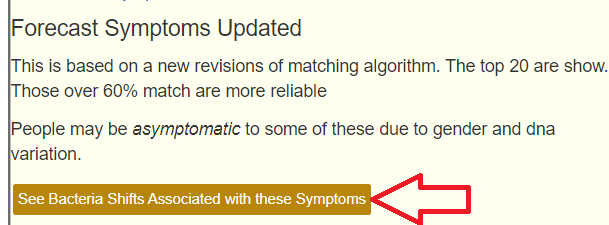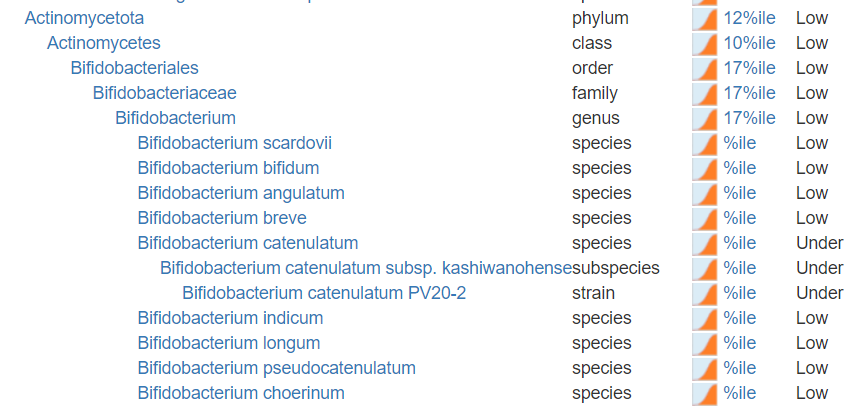After I posted List of Bacteria significant for ME/CFS from the shared samples uploaded to Microbiome Prescription, several readers asked “How do I use this”. This person has a child with autism. This took me a few days to come up with, code and implement an answer.
I wanted this to go beyond just one condition because there is a huge variety of symptoms and co-morbidity seen with different conditions. After testing and tuning the algorithm, I am pleased with the current results.
The process is show below.
The Steps

- Return to “My Profile”
- A new button will appear

Clicking it will move to the page below. YOU MAY FIND THAT IT TAKES UP TO A MINUTE (We are doing a massive number of computation)
This will show a tree of the bacteria involved. The Species are under the genus they below to. In the example below we see the ENTIRE phylum that Bifidobacterium is in are low (none found) of 9 species whose presence would likely reduce your symptoms.

Elsewhere you may see highs with certain bacteria species desired to higher. Often the symptom key is at the species level.

At the bottom you will see a button to get suggestions

The next page shows the symptoms being targeted to and choices of what you want to consider.

Make any changes desired and click show suggestions

REMEMBER these are suggestions for ONE person using their Symptoms and their microbiome profile. It is intended for them only. Your own suggestions may be very different with many items exchanged between ADD and REMOVE.
Technical Methodology Details are described here Technical Note: Prevalence, Average and Not Reported.
Post-Script
This approach sidestep the proforma process often drilled into researchers (you must have a health control group and a verified, criteria matching target population) and keeps to rigorous statistical analysis while ignoring these constraints which are philosophical in nature. We used the available data and set our significance level to P < 0.005; instead of the typical research level of P < 0.05. In other words, we are 10 times more certain about our results.